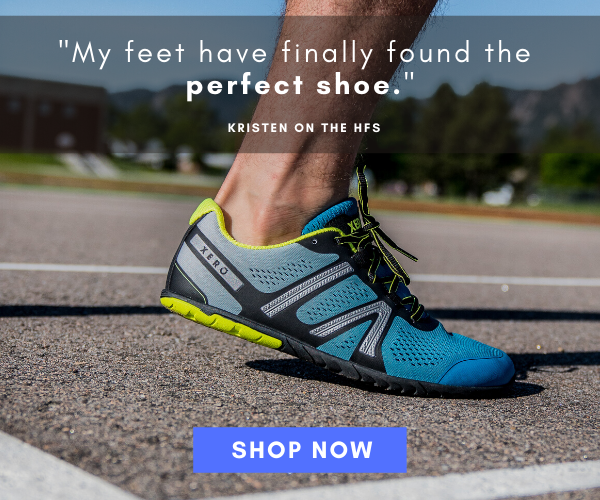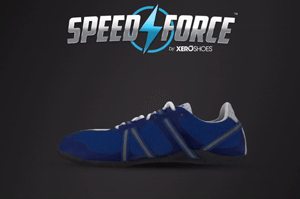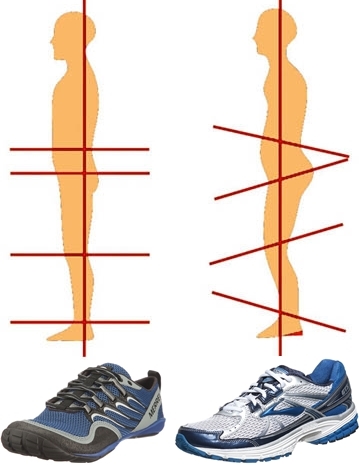Running shoes with more cushioning under the heel than the front of the shoe is strongly linked to injury because these shoes were found to increase mechanical stress on the calf muscles and the ankle, while hindering the energy-saving spring properties of the Achilles tendon.

Researchers have also discovered that the greater the heel-to-toe offset of a running shoes, the greater the muscular energy consumption, while profoundly altering your entire body posture and joint mechanics as compared with a flatter running shoe.
In support of these findings, Dattani and Dasgupta examined the physiological cost of wearing heeled footwear and found that heart rate increased as a function of heel height. Movement velocity also reduced with higher heeled footwear.
The evidence supports the idea that heeled footwear has too many functional consequences and should not be intended for clinical use. Likewise, the researchers garnered evidence that confirmed footwear with a heel height greater than 3 inches is health harming.

What’s the Solution?
In running, exceptional biomechanical ability correlates to heightened proprioception, an inherited feature of an efficiently functioning central nervous system. This is why habitual barefoot runners have superior mental capacities to generate less impact during running.
- Adding more and more cushioning under the foot interferes with the neuronal territories involved in movement control such as landing behavior. Therefore, less is more when it comes to protective footwear.
It is becoming more clear that runners underestimate the significance of wearing less protection on their feet to improve proprioception. Humans are gifted in running, and by wearing thin, zero-drop running shoes helps the brain rapidly identify the key information from the plantar surface to make optimal use of the lower extremity. This is why habitual barefoot and minimalist runners run more elegantly than conventional-shod runners. The truth is, forefoot running contributes more to injury prevention than under-heel protection does.
More From Run Forefoot:
- Running Shoes for Achilles Injury
- Heel Inserts Solve Nothing
- Forefoot Strike Wear Pattern
- Save BIG on Minimalist Running Shoes
- Full Minimalist Shoes for Forefoot Striking
- About the Author

References:
Dattani N and Dasgupta B. Physiological impact of heeled footwear. OIIRJ, 2015;5(2) 101-105.
Mathews DK, Wooten EP: Analysis of oxygen consumption of women while
walking in different style shoes. Arch of Phys Med Rehabilitation 1963 44: 569-571.


